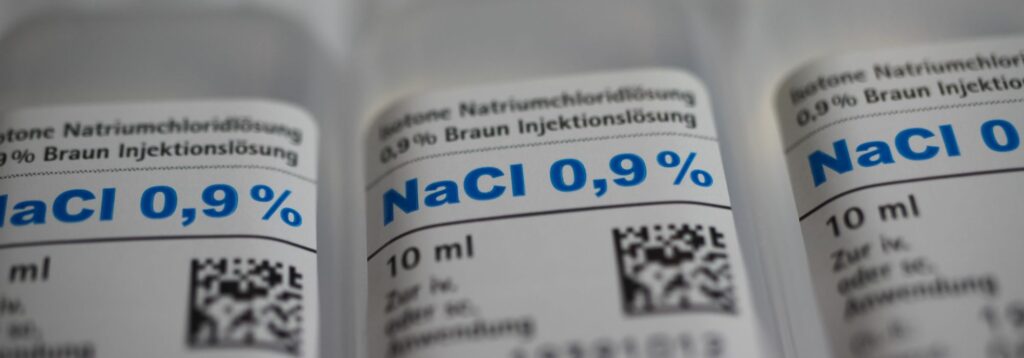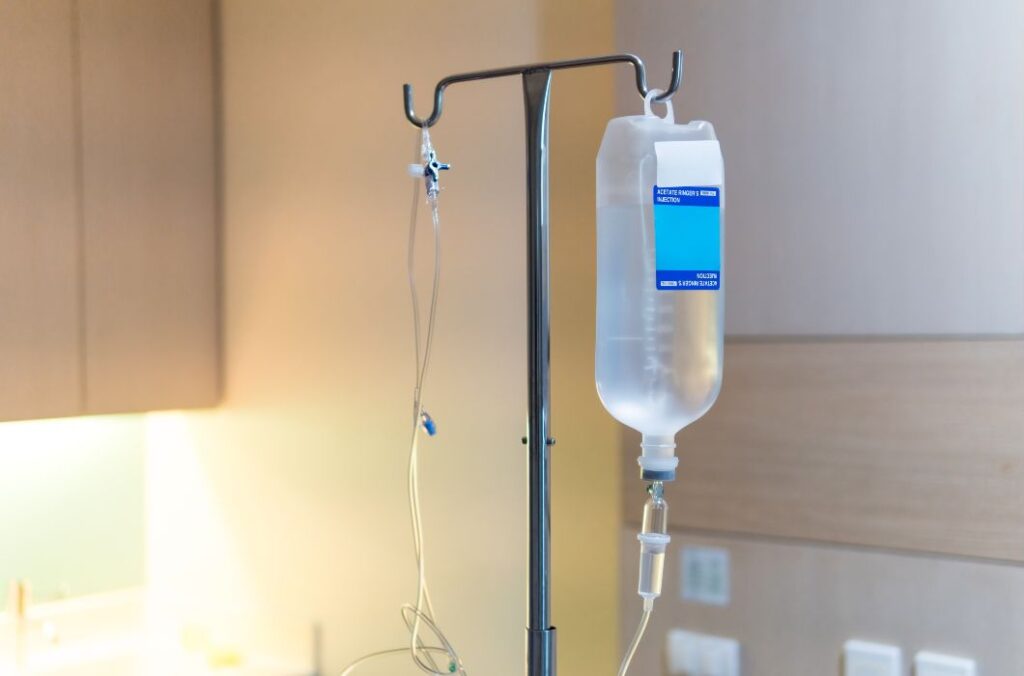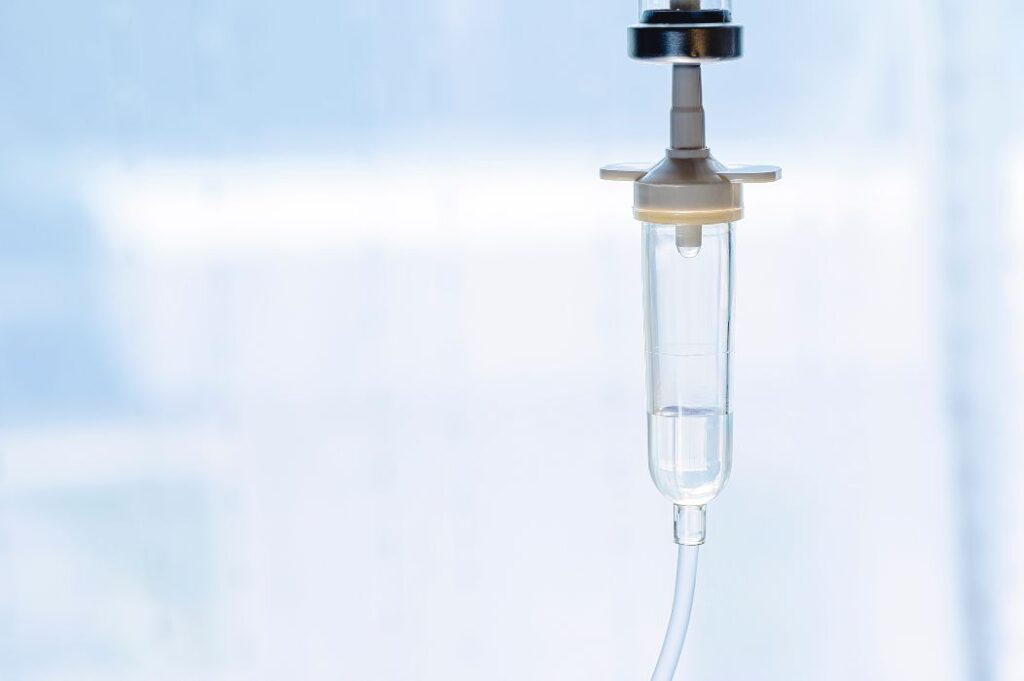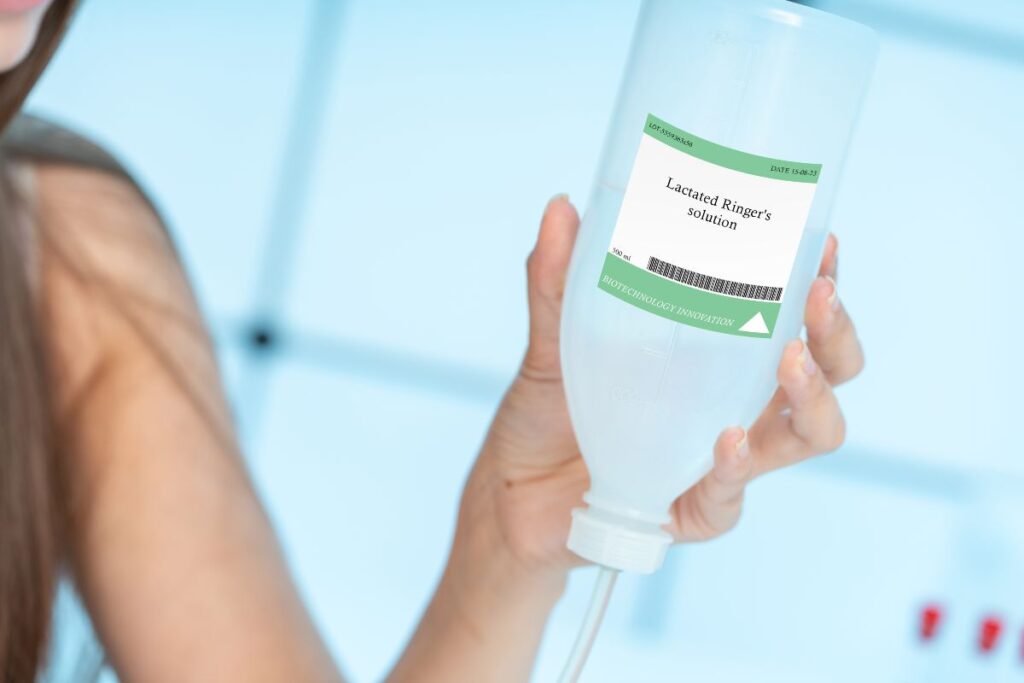What Does NaCl Infusion Do to pH? An Easy Explanation

Sodium chloride (NaCl) infusions, commonly known as saline solutions, are key in intravenous (IV) therapy, widely used for hydration and electrolyte balance. For anyone interested in IV therapy, understanding how these infusions affect the body’s pH balance can help in making informed decisions about their benefits and applications.
What Does NaCl Infusion Do to pH?
The effect of NaCl infusion on pH depends on the concentration of the solution administered. Isotonic saline (0.9% NaCl) is generally considered pH-neutral, while hypertonic solutions (e.g., 3% NaCl) can influence the body’s acid-base balance.
Isotonic Saline (0.9% NaCl)
Isotonic saline closely matches the osmolarity of human blood, making it a standard choice for fluid replacement. Its pH typically ranges from 4.5 to 7.0, with a nominal pH of 5.3.
Despite this slightly acidic pH, isotonic saline is considered pH-neutral in clinical practice because it does not significantly alter the body’s acid-base status when administered in appropriate volumes.


Hypertonic Saline (3% NaCl)
Hypertonic saline solutions, such as 3% NaCl, have higher sodium concentrations and are used to treat conditions like hyponatremia. These solutions have a pH range of 4.5 to 7.0, with a nominal pH of 5.8.
The administration of hypertonic saline leads to an increase in serum sodium and chloride levels, potentially resulting in hyperchloremic metabolic acidosis. This condition occurs when elevated chloride levels reduce bicarbonate concentrations, leading to a decrease in blood pH.
Mechanisms Influencing pH
The body’s acid-base balance is maintained through complex mechanisms involving the kidneys, lungs, and buffer systems. Infusing NaCl solutions can disrupt this balance, particularly when administered in large volumes or high concentrations.
Chloride’s Role
Chloride ions play a significant role in maintaining electrical neutrality and osmotic pressure. However, excessive chloride from NaCl infusions can displace bicarbonate ions, leading to a decrease in blood pH and the development of hyperchloremic metabolic acidosis.
Bicarbonate Buffer System
The bicarbonate buffer system is a primary regulator of blood pH. An increase in chloride ions from NaCl infusions can lead to a corresponding decrease in bicarbonate ions, disrupting this buffer system and resulting in acidosis.


Are NaCl Infusions Right for You?
For those exploring IV therapy for hydration or wellness, isotonic saline (0.9% NaCl) is the go-to option, as it provides balanced hydration without impacting the body’s pH levels significantly. IV therapy providers often choose isotonic saline because it’s safe and effective for most healthy individuals seeking hydration benefits.
Alternatives to NaCl Infusions
If NaCl infusions raise concerns about pH effects, there are other options for IV hydration:
Balanced Crystalloids
Balanced crystalloid solutions, such as lactated Ringer’s or Plasma-Lyte, contain electrolytes in concentrations more closely resembling plasma. These solutions are less likely to cause acid-base disturbances compared to NaCl infusions.
Considerations for Use
While balanced crystalloids offer advantages in maintaining acid-base balance, they may not be suitable for all patients. For example, lactated Ringer’s contains lactate, which may not be appropriate for patients with lactic acidosis. Therefore, the choice of infusion solution should be tailored to the individual patient’s needs and clinical condition.

Conclusion
NaCl infusions are a cornerstone of intravenous therapy, but their impact on the body’s pH balance varies with concentration and patient factors. Isotonic saline is generally pH-neutral, while hypertonic solutions can lead to acid-base disturbances. Healthcare providers must understand these effects to administer fluids safely and effectively, ensuring optimal patient outcomes.
Frequently Asked Questions (FAQs)
Can normal saline cause acidosis?
Yes, large volumes of normal saline (0.9% NaCl) can lead to hyperchloremic metabolic acidosis due to an increase in chloride ions, which can decrease bicarbonate levels and lower blood pH.
Why is hypertonic saline used?
Hypertonic saline (e.g., 3% NaCl) is used to treat severe hyponatremia and to reduce intracranial pressure in conditions like traumatic brain injury.
Are there alternatives to NaCl infusions that have less impact on pH?
Yes, balanced crystalloid solutions like lactated Ringer’s or Plasma-Lyte are alternatives that more closely mimic plasma electrolyte composition and have less impact on acid-base balance.
How can the risk of acidosis from NaCl infusions be minimized?
To minimize the risk, healthcare providers should monitor electrolyte levels and acid-base status, adjust infusion rates appropriately, and consider using balanced crystalloid solutions when suitable.
Is it safe to use hypertonic saline in patients with renal impairment?
Caution is advised when using hypertonic saline in patients with renal impairment, as they are at higher risk for sodium and fluid retention, which can exacerbate acid-base disturbances.
